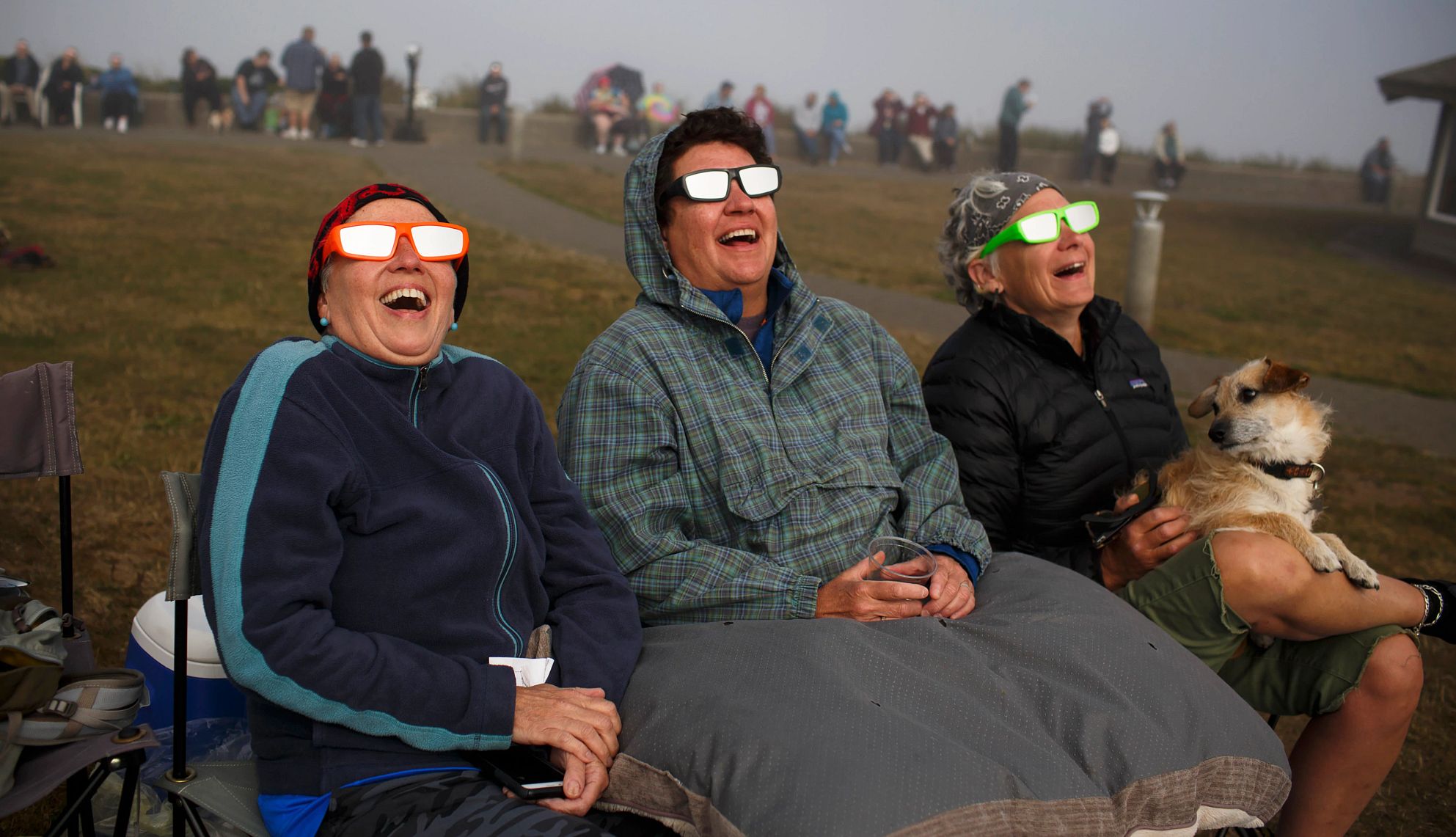AARP Hearing Center
Kathy Barrett, 59, of Salt Lake City, wasn’t an “eclipse believer.” She couldn’t understand why her brother, Everen Brown, 63, also of Salt Lake City, spent so much time, money and effort traveling the world — from Australia to Africa to Antarctica — chasing 12 total solar eclipses.
Then she joined him on a total-solar-eclipse trip to Wyoming in 2017.
“Excitement builds before it happens,” Barrett says, remembering that day. She describes an eerie, calm feeling as the Earth gradually turned to dusk. When the eclipse hit its peak, she says, people gasped, then cheered, clapped and screamed. “It’s like being in a whole new world. It transports you. … It’s spectacular.”


Tips to make the most of the total solar eclipse
1. Decide what experience you want.
What is most important to you? Do you want to be in a big celebratory crowd? Would you prefer an isolated, peaceful setting? Or would you prefer a place where you’ve wished to vacation or that you’ve wanted to share with relatives or friends?
2. Check climate records and find a wide panorama.
Aim for a place with the sunniest weather on April 8. Check cloud-cover maps at the American Astronomical Society’s website or Eclipsophile.com. According to Eclipsophile.com, clearer skies should be in Mexico and Texas with increasing cloudiness likely as the path approaches Canada, but weather can be capricious.
3. Book lodging now.
Hotels, Vrbos and Airbnbs are filling up, but people will cancel so keep trying, even days before the event. Book two to three nights, including the night after the eclipse, so you’re not stuck in gridlock trying to get home.
4. Make a car reservation now, then be aware and pay attention.
Mobility is essential in case weather doesn’t cooperate and you need to drive to clearer skies. Watch for heavy traffic, closed roads and reduced speed limits. Carry food and water.
5. Don’t take photos.
You only have a couple of minutes in totality, so stay in the moment and absorb the experience. Look at the delicate solar corona with binoculars (which is safe as long as the sun is entirely hidden by the moon). Check out the sunset-like lighting all around the horizon. Soak up the ambience. You’ll find plenty of eclipse pictures online afterward, but photos don’t capture the experience.
Eclipse information resources
She told her brother, “Now I know why you do this.” She adds, “I was totally blown away.… You turn immediately into a fan.”
This celestial phenomenon happens when the moon’s orbit takes it between Earth and the sun, so the moon’s shadow falls on our planet. With the moon entirely covering the sun, the sun’s glowing outer gases are visible. This rare event, happening every 18 months on average, is often visible only in difficult-to-reach places, such as oceans. But North Americans are in luck: A total solar eclipse lasting up to four and a half minutes is coming to parts of the continent on the afternoon of April 8, 2024.
Barrett is looking forward to joining her brother and nephew again for a spring trip to Killeen, Texas — between Austin and Dallas — to chase that solar eclipse.
The moon’s approximately 115-mile-wide shadow will travel from Mazatlán, Mexico, through Texas, Oklahoma, Arkansas, Missouri, Kentucky, Illinois, Indiana, Ohio, Pennsylvania, New York, Vermont, New Hampshire and Maine in the U.S. and through Ontario, Quebec, New Brunswick and Newfoundland in Canada.
That shadow track is called the path of totality. Totality is the brief time when the moon totally covers the sun, exposing the solar corona. The delicate-looking corona is outer solar gases that we can never otherwise see because the sun is so bright. Eclipse chasers want to be within that path of totality. Being at the shadow’s “centerline,” where the eclipse lasts longest, is best.
Hotels fill up fast. Keep these pointers in mind before you go.
Make sure your total is total. If the location has only 99 percent totality, you’ll miss all the cool stuff. Detailed maps of the path of totality are available at GreatAmericanEclipse.com, NASA and Xavier Jubier’s Interactive Google Map.


































































